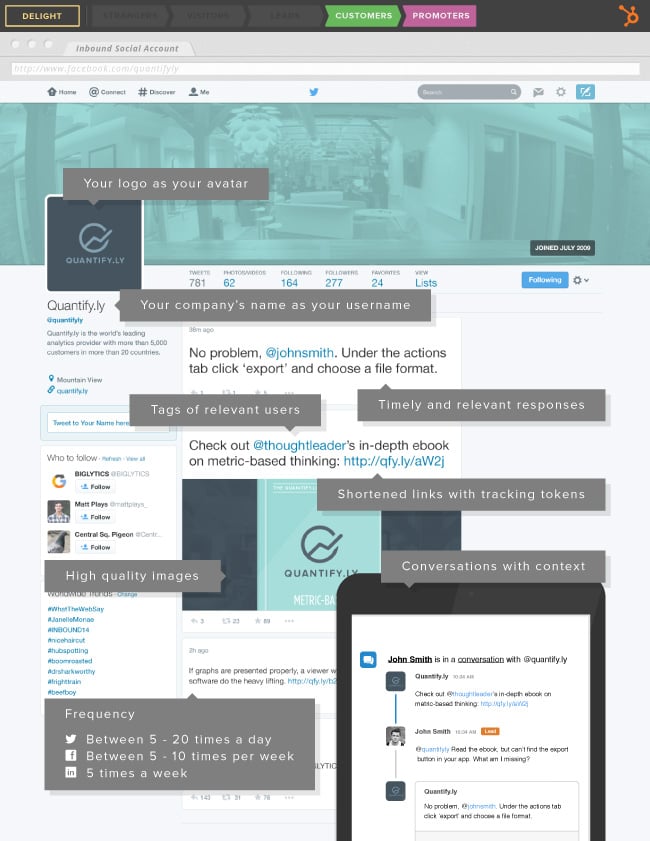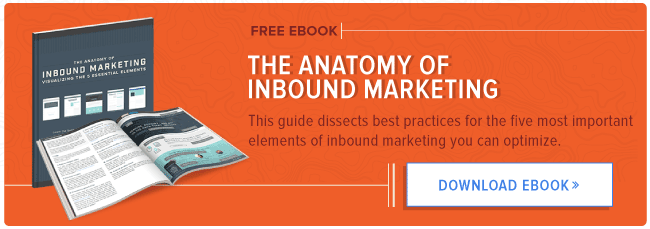 One of the toughest parts of being a marketer is staying up-to-date with all of the changes on social media. One day Facebook doesn’t have hashtags, and the next it does. The next week, Twitter has a completely redesigned profile layout. After that, Pinterest unveils promoted pins. And as a marketer, it’s part of your job to navigate through all of these changes.
One of the toughest parts of being a marketer is staying up-to-date with all of the changes on social media. One day Facebook doesn’t have hashtags, and the next it does. The next week, Twitter has a completely redesigned profile layout. After that, Pinterest unveils promoted pins. And as a marketer, it’s part of your job to navigate through all of these changes.
Besides keeping up with the news (and subscribing to your favorite marketing blogs), your first step toward navigating these changes is to understand the basic best practices that work across almost all popular social networks.
The infographic below is a great visual representation of exactly how you can optimize every one of your social media accounts. While there are certainly nuances to posting on each social network, these tips are the common thread across all your social media accounts.
(And if you want to learn best practices for executing on the other essential elements of inbound marketing, check out The Anatomy of Inbound Marketing.)
The Anatomy of an Optimized Social Media Account


1) Your Logo as Your Avatar
You want people to recognize that it’s your brand interacting with them on a social network, so it’s often best to make your avatar your logo (or a version of it), and to keep your avatar consistent across all your accounts.
2) Your Company’s Name as Your Username
When people go to mention you on social media, they’ll look up whatever seems logical — usually your brand name. So if you can swing it, make sure that your social media username is your brand name. If your brand name is a really common word or phrase or it’s too long, you may have to change it slightly. (For example, Signals’ Twitter handle is @getsignals.)
3) Appropriately Frequent Posts
Every social network is different, so your posting frequency strategy should reflect the norm of the network you’re on. On Twitter, try posting between 5-20 times a day. On Facebook, try 5-10 times per week. On Linkedin, try posting once every business day.
4) Mentions of Relevant Users
The whole point of being on social media is to talk with other people, so when you’re sharing other people’s content, be sure to give their username a proper shout-out. A simple “via [username]” works.
5) Shortened Links With Tracking Tokens
Shortened, trackable links let you see which pieces of content and which social networks are driving the best results for you, all without taking up much space. Make sure that every link you post has some UTM codes added, and then is shortened. (If you’re a HubSpot customer, this is all built into the software.)
6) High-Quality Images
You’ve likely heard the hype about visual content in social media before — it’s incredibly important for you to use high-quality images in your posts. Need help with creating visual content, but don’t have Photoshop? No problem: Check out these other great resources.
7) Timely and Contextual Responses
Because social media is social, you should not only be sharing content, but also be responding to those who reach out to you. They expect it — according to survey data from Lithium Technologies, 53% of surveyed Twitter users expect a response from brands they reach out to on Twitter in less than an hour. That number rises to 72% when they have complaints.
Besides being timely, you should also make sure you’ve got context on who you’re responding to — are they a VIP customer? An evangelist you should thank? A lead that’s really ready to buy from you? (If you’re using HubSpot’s Social Inbox, that information is readily available in your conversation stream.)
Want to get more actionable examples of the key inbound marketing elements? Download this free ebook.
![]()





